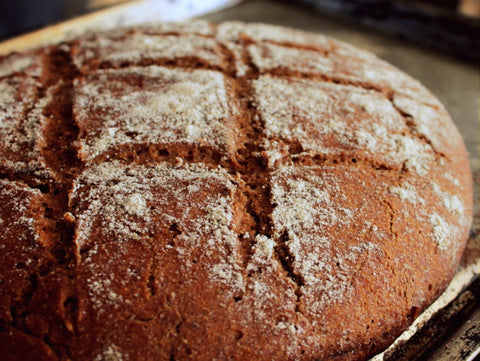
Rye is such a cool grain with a deep and rich history of nourishing cultures throughout the world. So is the practice of sourdough baking. Marrying the two, as I have over the past couple of years, produces some really good loaves, Sourdough Flatbread, and interesting sweet treats. After falling in love with a no-knead dough that produces a super simple loaf, a lovely pizza crust, and a delicious focaccia; I ended up putting together a collection of recipes together to form a cookbook. This book, 100% RYE, contains some recipes that I didn’t even know were possible without wheat, sugar, or yeast. It’s truly a collection of family favorites with much of the recipe-testing and development done with the Cultures for Health Rye Sourdough Starter. Here’s a little bit more about that starter and the ins-and-outs of baking with 100% rye sourdough.

In my research on 100% rye baked goods I often came across opinions leading me to believe that wheat was a necessary ingredient in edible rye breads. I found that working with rye was tricky and certainly churned out a great deal of not-so-appetizing loaves before figuring my way around the grain. Once I found hydration levels, kneading techniques, and baking strategies that worked with the rye grain, delicious fermented breads were beginning to grace our table. The baking, cooking, and fermenting I do in my own home has to be simple enough to be sustainable. Elaborate, labor intensive, or special equipment and ingredient-heavy recipes are not doable in our off-grid kitchen with four young children running around. So all of the recipes in 100% RYE are simple, long (or slow) fermented, and contain basic but healthy ingredients such as traditional fats, molasses, and honey.

Some of the recipes we make on a regular basis include:
- No-Knead Sourdough Rye Bread
- No-Knead Sourdough Rye Focaccia
- Rye Sourdough Boule
- Rye Sourdough Tortillas
- Sourdough Rye Molasses Snack Bread
- Sourdough Rye Muffins
- Honey-Sweetened Rye Sourdough Brownies















